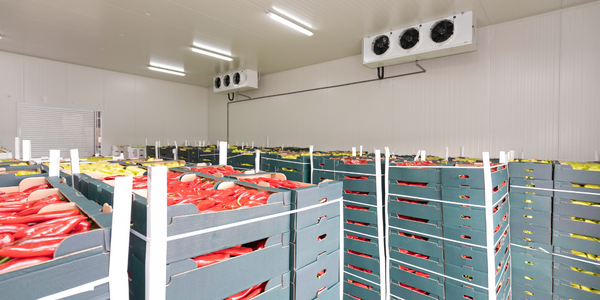Technology Category
- Analytics & Modeling - Digital Twin / Simulation
Applicable Industries
- Packaging
- Transportation
Applicable Functions
- Product Research & Development
- Quality Assurance
Use Cases
- Intelligent Packaging
- Virtual Prototyping & Product Testing
Services
- Testing & Certification
About The Customer
Mabe is a global company that designs, produces, and distributes appliances to more than 70 countries. Incorporated in 1946 in Mexico City, the company produces a wide range of goods including fridge freezers, ovens and washer-dryers. For white goods manufacturers like Mabe, the quality of the design and engineering of their home appliances is paramount for the best possible customer experience. However, these products are all subject to potential drop and impact damage from the warehouse through to transportation to the customer’s doorstep. Mabe, a $3 billion global company headquartered in Mexico City, understands the importance of carefully designed packaging to protect the 15 brands of appliances that it designs, manufactures and distributes for sale in 70 countries.
The Challenge
Mabe, a global company that designs, produces, and distributes appliances to over 70 countries, faced a challenge in improving the protection of its washer-dryer by optimizing packaging material. The company wanted to reduce potential transit damage to its products while avoiding the use of excessive packaging that would lead to significantly higher material and shipping costs. The challenge was to produce an optimized packaging design that took into account a variety of loading scenarios and alternative package designs, and to do so early in the design stage, before any physical testing of the packaging was performed. Mabe also wanted to transfer the analytical simulation techniques developed for the washer-dryer to packaging for other products in the future, allowing the company to optimize and accelerate its design efforts.
The Solution
Mabe collaborated with Altair ProductDesign for its experience in applying optimization strategies for an extensive array of products and packaging. The first task was to generate a finite element analysis (FEA) model that accurately represented Mabe’s product and its packaging structure. Altair's HyperWorks’ pre-processing solution, HyperMesh, was utilized to create a complete FEA model of all the product’s relevant structural components as well as such packaging structures as expanded polystyrene (EPS) foams, laminate paper and corrugated board. Altair ProductDesign engineers were then able to subject the virtual model of the washer-dryer and packaging material to the same loads that they endured in physical testing. Topology optimization using HyperWorks’ OptiStruct and HyperStudy technologies were utilized to improve product protection, reduce material costs, reduce packaging weight and improve performance of both the EPS foam structures and the laminated paper corner posts.
Operational Impact
Quantitative Benefit

Case Study missing?
Start adding your own!
Register with your work email and create a new case study profile for your business.
Related Case Studies.

Case Study
Airport SCADA Systems Improve Service Levels
Modern airports are one of the busiest environments on Earth and rely on process automation equipment to ensure service operators achieve their KPIs. Increasingly airport SCADA systems are being used to control all aspects of the operation and associated facilities. This is because unplanned system downtime can cost dearly, both in terms of reduced revenues and the associated loss of customer satisfaction due to inevitable travel inconvenience and disruption.

Case Study
IoT-based Fleet Intelligence Innovation
Speed to market is precious for DRVR, a rapidly growing start-up company. With a business model dependent on reliable mobile data, managers were spending their lives trying to negotiate data roaming deals with mobile network operators in different countries. And, even then, service quality was a constant concern.

Case Study
Digitize Railway with Deutsche Bahn
To reduce maintenance costs and delay-causing failures for Deutsche Bahn. They need manual measurements by a position measurement system based on custom-made MEMS sensor clusters, which allow autonomous and continuous monitoring with wireless data transmission and long battery. They were looking for data pre-processing solution in the sensor and machine learning algorithms in the cloud so as to detect critical wear.

Case Study
Cold Chain Transportation and Refrigerated Fleet Management System
1) Create a digital connected transportation solution to retrofit cold chain trailers with real-time tracking and controls. 2) Prevent multi-million dollar losses due to theft or spoilage. 3) Deliver a digital chain-of-custody solution for door to door load monitoring and security. 4) Provide a trusted multi-fleet solution in a single application with granular data and access controls.

Case Study
Vehicle Fleet Analytics
Organizations frequently implement a maintenance strategy for their fleets of vehicles using a combination of time and usage based maintenance schedules. While effective as a whole, time and usage based schedules do not take into account driving patterns, environmental factors, and sensors currently deployed within the vehicle measuring crank voltage, ignition voltage, and acceleration, all of which have a significant influence on the overall health of the vehicle.In a typical fleet, a large percentage of road calls are related to electrical failure, with battery failure being a common cause. Battery failures result in unmet service agreement levels and costly re-adjustment of scheduled to provide replacement vehicles. To reduce the impact of unplanned maintenance, the transportation logistics company was interested in a trial of C3 Vehicle Fleet Analytics.

Case Study
3M Gains Real-Time Insight with Cloud Solution
The company has a long track record of innovative technology solutions. For example, 3M helps its customers optimize parking operations by automating fee collection and other processes. To improve support for this rapidly expanding segment, 3M needed to automate its own data collection and reporting. The company had recently purchased the assets of parking, tolling, and automatic license plate reader businesses, and required better insight into these acquisitions. Chad Reed, Global Business Manager for 3M Parking Systems, says, “With thousands of installations across the world, we couldn’t keep track of our software and hardware deployments, which made it difficult to understand our market penetration.” 3M wanted a tracking application that sales staff could use to get real-time information about the type and location of 3M products in parking lots and garages. So that it could be used on-site with potential customers, the solution would have to provide access to data anytime, anywhere, and from an array of mobile devices. Jason Fox, Mobile Application Architect at 3M, upped the ante by volunteering to deliver the new app in one weekend. For Fox and his team, these requirements meant turning to the cloud instead of an on-premises datacenter. “My first thought was to go directly to the cloud because we needed to provide access not only to our salespeople, but to resellers who didn’t have access to our internal network,” says Fox. “The cloud just seemed like a logical choice.”



